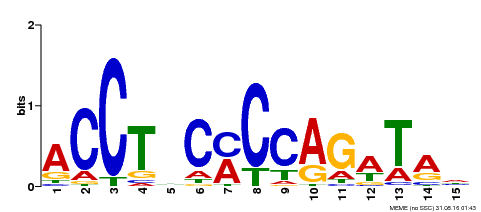 |
PlantRegMap/PlantTFDB v5.0
Plant Transcription
Factor Database
|
| Home TFext BLAST Prediction Download Help About Links PlantRegMap |
Transcription Factor Information
| Basic Information? help Back to Top | |||||||||
|---|---|---|---|---|---|---|---|---|---|
| TF ID | XP_011097108.1 | ||||||||
| Organism | |||||||||
| Taxonomic ID | |||||||||
| Taxonomic Lineage |
cellular organisms; Eukaryota; Viridiplantae; Streptophyta; Streptophytina; Embryophyta; Tracheophyta; Euphyllophyta; Spermatophyta; Magnoliophyta; Mesangiospermae; eudicotyledons; Gunneridae; Pentapetalae; asterids; lamiids; Lamiales; Pedaliaceae; Sesamum
|
||||||||
| Family | C2H2 | ||||||||
| Protein Properties | Length: 513aa MW: 57153.8 Da PI: 6.1316 | ||||||||
| Description | C2H2 family protein | ||||||||
| Gene Model |
|
||||||||
| Signature Domain? help Back to Top | |||||||
|---|---|---|---|---|---|---|---|
| No. | Domain | Score | E-value | Start | End | HMM Start | HMM End |
| 1 | zf-C2H2 | 21 | 8.5e-07 | 262 | 283 | 2 | 23 |
EETTTTEEESSHHHHHHHHHHT CS
zf-C2H2 2 kCpdCgksFsrksnLkrHirtH 23
C++Cgk F+r nL+ H+r H
XP_011097108.1 262 FCTICGKGFKRDANLRMHMRGH 283
6*******************98 PP
| |||||||
| Protein Features ? help Back to Top | ||||||
|---|---|---|---|---|---|---|
| Database | Entry ID | E-value | Start | End | InterPro ID | Description |
| SuperFamily | SSF57667 | 2.25E-5 | 259 | 286 | No hit | No description |
| PROSITE profile | PS50157 | 12.03 | 261 | 288 | IPR007087 | Zinc finger, C2H2 |
| SMART | SM00355 | 0.0026 | 261 | 283 | IPR015880 | Zinc finger, C2H2-like |
| Gene3D | G3DSA:3.30.160.60 | 6.3E-6 | 262 | 312 | IPR013087 | Zinc finger C2H2-type/integrase DNA-binding domain |
| PROSITE pattern | PS00028 | 0 | 263 | 283 | IPR007087 | Zinc finger, C2H2 |
| SMART | SM00355 | 58 | 310 | 343 | IPR015880 | Zinc finger, C2H2-like |
| SMART | SM00355 | 22 | 348 | 370 | IPR015880 | Zinc finger, C2H2-like |
| Gene Ontology ? help Back to Top | ||||||
|---|---|---|---|---|---|---|
| GO Term | GO Category | GO Description | ||||
| GO:0006355 | Biological Process | regulation of transcription, DNA-templated | ||||
| GO:0010044 | Biological Process | response to aluminum ion | ||||
| GO:0010447 | Biological Process | response to acidic pH | ||||
| GO:0005634 | Cellular Component | nucleus | ||||
| GO:0003676 | Molecular Function | nucleic acid binding | ||||
| GO:0003700 | Molecular Function | transcription factor activity, sequence-specific DNA binding | ||||
| GO:0046872 | Molecular Function | metal ion binding | ||||
| Sequence ? help Back to Top |
|---|
| Protein Sequence Length: 513 aa Download sequence Send to blast |
MDPEERLCAD TWTKSSSGCE SLNTPPNIRI FTDFNSQQQK WANSSFLVQQ HFPDFNQPFG 60 AQNTLSCNVN TQKQMSDPQD KPTCDAHESS NTQDWDPRAM LNNLSFLETK IHQLQDLVHL 120 IVERRGQVTG RADQVLVLQQ QLITADLTSI IVQLISTAGS LLPSVTQTLC SGSSISQLGQ 180 FAGVTNQSAG VLDNVPPHNN NVNKVEDNSD LTGYFGAEQN CPIEDHEMKS DDDADEGENL 240 PPGSYEILQL EKEEILAPHT HFCTICGKGF KRDANLRMHM RGHGDEYKTP AALAKPNKES 300 SSELILIKRY SCPYVGCKRN KDHKKFQPLK TILCVKNHYK RTHCDKTYTC SRCNTKKFSV 360 IADLKTHEKH CGRDKWLCSC GTTFSRKDKL FGHIALFQGH TPAIPIEESK GSAGPSDRGQ 420 CSEATNKVEQ LEFNYKLDAP SRSACQNVMD VEGAGEDPTS YFSPLGFDTS SMSGFHEFPR 480 PPFEDSENSF SFLLSGACYP PKNGRYTGSN DLE |
| Functional Description ? help Back to Top | ||||||
|---|---|---|---|---|---|---|
| Source | Description | |||||
| UniProt | Probable transcription factor. Together with STOP2, plays a critical role in tolerance to major stress factors in acid soils such as proton H(+) and aluminum ion Al(3+). Required for the expression of genes in response to acidic stress (e.g. ALMT1 and MATE), and Al-activated citrate exudation. {ECO:0000269|PubMed:17535918, ECO:0000269|PubMed:18826429, ECO:0000269|PubMed:19321711, ECO:0000269|PubMed:23935008}. | |||||
| Binding Motif ? help Back to Top | |||
|---|---|---|---|
| Motif ID | Method | Source | Motif file |
| MP00196 | ampDAP | Transfer from AT1G34370 | Download |

| |||
| Cis-element ? help Back to Top | |
|---|---|
| Source | Link |
| PlantRegMap | XP_011097108.1 |
| Regulation -- Description ? help Back to Top | ||||||
|---|---|---|---|---|---|---|
| Source | Description | |||||
| UniProt | INDUCTION: By shock H(+) and Al(3+) treatments. {ECO:0000269|PubMed:17535918}. | |||||
| Regulation -- PlantRegMap ? help Back to Top | ||||||
|---|---|---|---|---|---|---|
| Source | Upstream Regulator | Target Gene | ||||
| PlantRegMap | Retrieve | Retrieve | ||||
| Annotation -- Protein ? help Back to Top | |||||||
|---|---|---|---|---|---|---|---|
| Source | Hit ID | E-value | Description | ||||
| Refseq | XP_011097108.1 | 0.0 | LOW QUALITY PROTEIN: protein SENSITIVE TO PROTON RHIZOTOXICITY 1 | ||||
| Swissprot | Q9C8N5 | 0.0 | STOP1_ARATH; Protein SENSITIVE TO PROTON RHIZOTOXICITY 1 | ||||
| TrEMBL | A0A2G9H049 | 0.0 | A0A2G9H049_9LAMI; Uncharacterized protein | ||||
| STRING | XP_008237278.1 | 0.0 | (Prunus mume) | ||||
| Orthologous Group ? help Back to Top | |||
|---|---|---|---|
| Lineage | Orthologous Group ID | Taxa Number | Gene Number |
| Asterids | OGEA4754 | 24 | 41 |
| Best hit in Arabidopsis thaliana ? help Back to Top | ||||||
|---|---|---|---|---|---|---|
| Hit ID | E-value | Description | ||||
| AT1G34370.2 | 0.0 | C2H2 family protein | ||||



